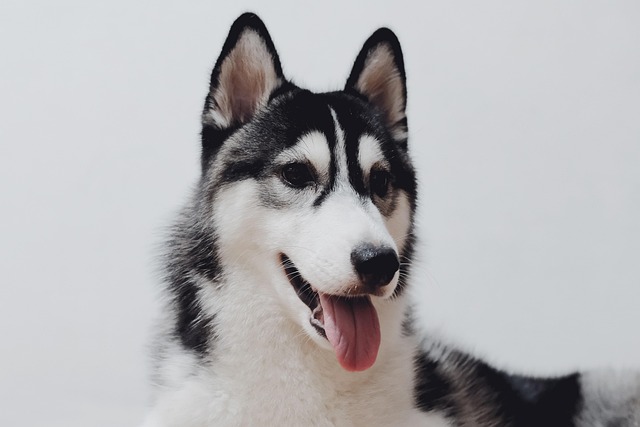
How can I tell if my dog's heatstroke is serious
Let’s be real: It’s a sticky August morning in Los Angeles, and you took your 2-year-old Golden Retriever, Max, for a walk a little later than usual
In the years spent with dogs, we can truly feel their deep dependence on us. But when we have to temporarily leave due to work, life, and other reasons, some dogs may show extreme anxiety, which is called separation anxiety. Many owners have doubts: Will their dog's separation anxiety disappear on its own? To answer this question, we need to first delve into the separation anxiety of dogs.
Separation anxiety in dogs is a common behavioral problem that manifests in various forms. When the owner is about to go out, the dog may become unusually clingy, closely following and even making a mournful cry; After their owner leaves, they may wander around the house, bark incessantly, damage furniture, and urinate and defecate everywhere. These behaviors may seem like mischievous dogs, but they are actually external manifestations of their inner anxiety.
There are multiple reasons why dogs experience separation anxiety. From an evolutionary perspective, dogs, as social animals, have a strong sense of belonging to a group. In the process of living together with humans, they consider their owners as the core members of their own group. Once the owner leaves, they will feel abandoned by the group, leading to anxiety and fear. From the perspective of growth experience, if dogs do not receive sufficient social training during their puppy years and lack opportunities to interact with different people and environments, they may develop excessive dependence on their owners, making them more prone to separation anxiety when their owners leave. In addition, sudden changes in the living environment, such as moving or changing owners, can also make dogs feel uneasy and trigger separation anxiety.

So, will dogs' separation anxiety disappear on its own? From a professional perspective, the answer is no. Dogs' separation anxiety does not disappear on its own over time, and if left untreated, it may become increasingly severe. This is like a child, if they are constantly in a state of fear and anxiety without effective comfort and guidance, these negative emotions will continue to accumulate. Dogs are no exception. Every anxious experience when their owner leaves deepens their fear of separation, making the symptoms of separation anxiety more pronounced.
I have encountered such a case before. A friend has a little teddy bear, and at first the puppy was lively and cute. But my friend's work is getting busier and he often leaves his little dog alone at home. Gradually, the puppy developed severe separation anxiety. As soon as a friend picks up the key and prepares to go out, the puppy starts to become restless and barking incessantly. At first, my friend thought that the puppy was just making a fuss, but it will get better after a while. However, the situation did not turn out as he had hoped, and the puppy's anxiety became increasingly severe, even starting a hunger strike. Later, under the guidance of professionals, the friend took a series of training and soothing measures to gradually alleviate the separation anxiety of the puppy.
Since separation anxiety in dogs does not disappear on its own, as owners, how can we help them overcome it? Firstly, we need to start with daily training. Starting from a young age, dogs can gradually adapt to brief separations, such as leaving for a few minutes and then gradually extending the time. When leaving and returning, do not give dogs excessive attention or comfort, to avoid making them feel that separation is a very special thing. Secondly, provide dogs with a comfortable and safe space where they can find a sense of security when their owners leave. You can also leave some items with the owner's scent for the dog, such as old clothes, so that they can feel the familiar scent even when the owner is not around. In addition, enriching the lives of dogs by providing them with sufficient toys and activities, allowing them to have something to do and distract themselves when they are alone at home.
Dogs are our most loyal companions, and their emotions are closely related to us. When we see dogs suffering from separation anxiety, our hearts are also filled with worry and heartache. So, don't ignore the separation anxiety of dogs, use our love and patience to help them overcome this problem. Let our dogs grow up happily in a secure environment and accompany us through more wonderful times. Because they give us unconditional love, we should also give back the same care and protection to them. In the days to come, let's work together to make the world of dogs no longer shrouded in separation anxiety, only warm and happy.

Let’s be real: It’s a sticky August morning in Los Angeles, and you took your 2-year-old Golden Retriever, Max, for a walk a little later than usual

You're enjoying a summer afternoon at the park when you notice your dog has stopped panting and appears disoriented - their gums are bright red

Let’s paint the picture: You’re in your Denver apartment, watching your 4-year-old Boston Terrier, Ruby, plop down mid-play session with her favorite toy

Many dog owners notice their pets nails seem shorter after regular walks,but how much does this daily activity actually help?The answer depends on where you walk—concrete sidewalks or asphalt streets gently file nails as a dog's paws hit the ground

Most dog owners notice their pup scooting across the carpet at some point, but few connect it to impacted anal glands. These small sacs near a dog’s rectum secrete a scent for marking territory

Most vets agree that regular dog teeth cleaning is key to avoiding painful dental issues later. For healthy adult dogs, a professional cleaning at the vet’s office every 12 to 18 months usually works well.